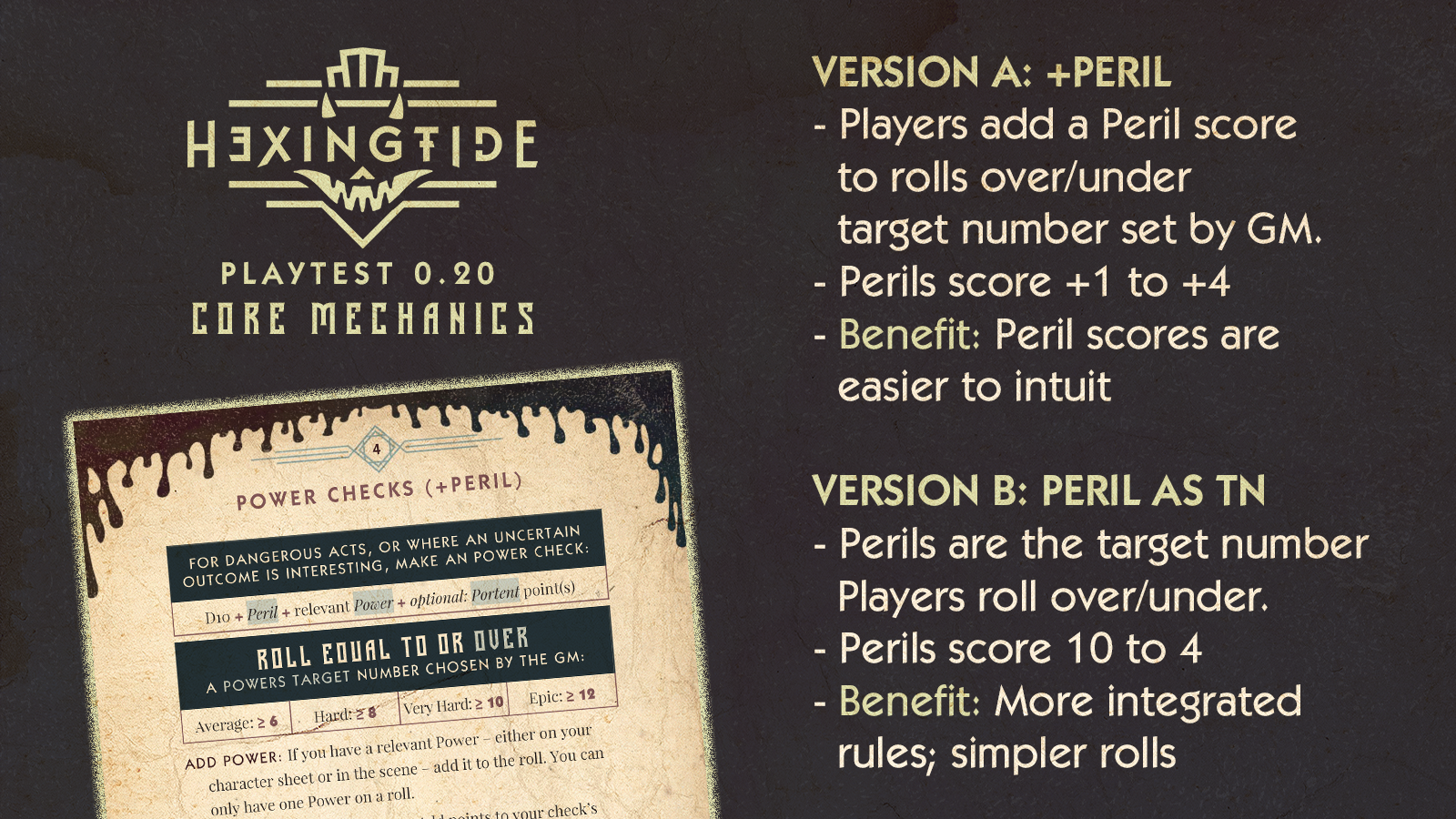(A Note: In the few months between the previous post to this blog and this, I have taken on a management role with a new employers. Understandably, my focus has been there. I appreciate the patience of my playtesters.)
Feedback Requested Between Two Core Mechanics
I’ve introduced a new set of attributes for player characters called “Perils,” which is designed to further differentiate character strengths and give the game another tie back into the theme and genre conventions of monster heroes struggling against bad guys… and their natures and wider human society.
Each PC has three Peril scores. Instead of open-ended descriptors like the other character attributes, the Perils are set, tied to key monster themes: Danger, Hardship, and Isolation.
My initial design for them was overly complex (involving mechanics inspired by The One Ring’s X – Attribute = Target Number approach). It worked, but it wasn’t intuitive enough for my playtest with my regular in-person gaming group.
The idea, I’m convinced, is good. The execution? Not so much.
Back to the drawing board!
Here are two approaches to handling Hexingtide’s core mechanics. I’d love your feedback!
What you need to know:
Characters have four types of attributes:
- Perils: Challenging circumstances and history which define the PC’s life and strengths. Categorized into Danger, Hardship, and Isolation. Scores vary based on core mechanic options below.
- Powers: Flexible catch-all for abilities, equipment, training, etc. Scores +1 to +4.
- Portents: Monstrous nature, risks, or dangers that may throw the character’s life and surroundings into chaos. Dwindling resources that act as HP analogues with max scores of 4-8.
- Pacts: People, relationships, memories, memorabilia, etc. that tie the character back to the mortal human world. Boolean used/not used value used to buff or heal a character. (Shout out to the TTRPG Twitter crew for the feedback and ideas on a letter-P name for this, btw.)
Two core dice rolls:
- Powers Check: d10 roll + a relevant Power. Roll high.
- Portents Check: d10 roll + the at-risk, ever-increasing Portent. Roll low.
How the Peril score fits into the above two rolls is what’s in question.
Version A: +Peril
- Players add a Peril score to rolls over/under target number set by GM
- Perils score +1 to +4
- Pro: Peril scores are easier to intuit (e.g. +4 is bigger and more of a double-edged sword than a +1 is)
- Con: Plenty of games have done the dX + modifier Y + modifier Z approach to the point it seems blasé. GMs have to adjudicate target numbers, and those target numbers differ if it’s a Power or Portents check.
Version B: Peril as TN
- Peril scores themselves are the target number Players roll over/under.
- Perils score 10 to 4
- Pro: Fewer, more integrated rules with less math. Players always know the target number (which is fine in a minimalist rule set like this).
- Con: Understanding the narrative difference in Peril scores when the same number is a roll over/under target number in different contexts may be confusing (I hope my rules text makes it clear).
Review the rules in a PDF excerpt of the upcoming 0.20 rules release here:
(Or download here.)
What are your thoughts? I welcome your feedback!
Right now, I think I like the idea of using Peril scores as a Target Number. We’ll see.

